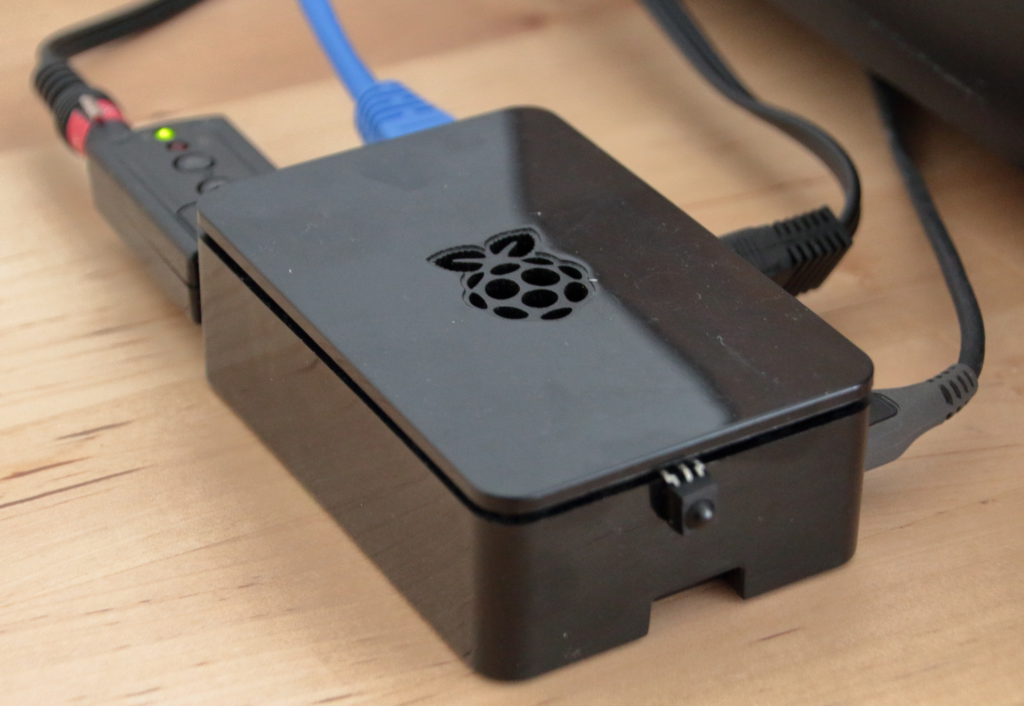Rigol DS1054Z Password Login Problem *Solved*
I use the Rigol DS1054Z as my benchtop oscilloscope now since a few years (the one in my title image), and I am rather happy with it. However, one thing never worked for me (but is of utterly low importance – it was just nagging me): You can access a (very) few scope functions via the web interface when opening http://[IP of the scope]. The network settings section is password protected, and according to e.g. this post on EEVblog the user “rigollan” with password “111111” should work. It never worked for me. Other posts claim that “test” or even “blah” is the correct username, password “111111”. Did not work for me either. This finally worked:
- Go to http://[IP of the scope]
- Go to “Security”
- Enter both as old and new password “111111” and confirm –> Success message appears
- Now I can log in with any user with four or less letters, among them “test” and “blah”, but also “a” or “1234” works!
Funny…
IPv6 in my LAN with Unitymedia, Technicolor TC7200, Ubiquiti EdgeOS on Edgerouter X and Prefix Delegation
This post describes how to set up IPv6 with Edgerouter X (and supposedly any EdgeOS device) in interplay with the infameous Technicolor TC7200 cable modem as provided by Unitymedia in Germany, using prefix delegation to advertise valid IPv6 addresses into the LAN. This guide shows how to configure settings via GUI instead of CLI.
Quick Note: Web-View with PyQt5 and Qt 5.7+ on Raspberry Pi
This is a short note how to use QtWebKit with Qt 5.7+ on Raspberry Pi.
Continue reading “Quick Note: Web-View with PyQt5 and Qt 5.7+ on Raspberry Pi”
RFID Treasure Chest for LARP
I built a treasure chest which opens if a riddle is solved. To prove that the riddle is solved, the players need to put the correct three RFID/NFC tokens (out of several tokens to choose from) onto three RFID readers in the correct order. If they fail too often, a curse is uttered! In this post I describe the hardware selection, the electronics, the assembly and the software.
Root shell on a MStar based UMC TV (Sharp LC-24CFG6132EM)
Not being happy with a few things on my Sharp LC-24CFG6132EM smart TV, I decided to dig deeper, hoping to find ways to reconfigure some settings. While I not achieved that goal yet, I at least managed to gain root access to the Linux running on the TV. Since the TV set is based on a MStar product, I suspect that my procedure will work for any MStar based TV, at least those manufactured by UMC, which for Europe own the brands of Sharp and Blaupunkt. So here I document the procedure.
Continue reading “Root shell on a MStar based UMC TV (Sharp LC-24CFG6132EM)”
Media Center revisited: Libre Computer “Le Potato” plus LibreELEC
While Raspberry Pi with xbian is already a versatile media center, I’m not 100% satisfied with everything. And, with the advent of H.265/HEVC as German DVB-T2 standard, the technical requirements have outrun the current offerings of the Raspberry Foundation. So I decided to migrate my Kodi media center to brand-new Libre Computer’s Le Potato board with LibreELEC, and here are the steps to do so, starting from the xbian media center described in an earlier blog post.
Continue reading “Media Center revisited: Libre Computer “Le Potato” plus LibreELEC”
TARDIS housing for my Raspberry Pi media center
When I built my media center, it went into a simple black box:

Boooring! Continue reading “TARDIS housing for my Raspberry Pi media center”
Interfacing Vitovalor 300-P with a Raspberry Pi
I want to integrate my new Viessmann Vitovalor 300-P fuel cell heating into my home automation. For this, I use the Optolink interface, vcontrold from the openv community, and create my own configuration files from several sources.
Continue reading “Interfacing Vitovalor 300-P with a Raspberry Pi”
Touch Rotation with 10″ Display from Joy-IT
I got myself a 10″ multi-touch display from Joy-IT for my Raspberry. I’m quite satified with the display, it has a relatively high resolution, very good display quality, good viewing angle, and touch works very well – the necessary driver is included in Raspbian. Two things that could be better: The backlight is not software-controllable, and the position of the HDMI and USB connectors is not optimal.
In the end I want to use the display mounted vertically in a wall, so I included the line
|
1 |
display_rotate=3 |
into /boot/config.txt. Unfortunately this only rotates the display, not the touch input, so the mouse is not following the touch. The line lcd_rotate=3, which would turn both display and touch, only works for the official Raspberry Foundation display. The methods described in my 3.2″ Touch Display Quick Guide do not work with this screen either. First, because tslib does not know how to handle the multitouch, and second: the SwapAxes line is also not recognised.
Still, /usr/share/X11/xorg.conf.d/99-calibration.conf is the key to success:
|
1 2 3 4 5 |
Section "InputClass" Identifier "calibration" MatchProduct "BYZHYYZHY By ZH851" Option "TransformationMatrix" "0 -1 1 1 0 0 0 0 1" EndSection |
That does the trick, also on brand-new Raspbian Stretch. For more details on the transformatin matrix, also for other rotations, go here.
Creating the “Perfect” Hiking Map for Germany and other Countries
In this post I show how to create useful hiking maps by merging OpenStreetMap data with the usually excellent official maps of the cartographic offices of Germany and several other countries. Using MOBAC and Maperitive, a transparent layer containing POIs, landscape features and elevation information is generated from OSM data and then overlayed on the official maps. Also, mapsources for OruxMaps are derived for the various countries.
Continue reading “Creating the “Perfect” Hiking Map for Germany and other Countries”
